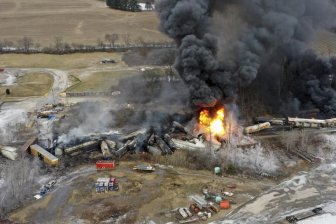Experts say an uptick in drought and other extreme weather events has beef farmers in the U.S. and Canada thinning their herds in near-record numbers, which could lead to supply problems in the beef industry over the longer term.
They say that farmers will increasingly struggle with profitability amid the unpredictable seasons as climate change makes drought, flooding and wildfires more common.
Read more:
Canada’s Agriculture Day: Reducing food waste
Read next:
Part of the Sun breaks free and forms a strange vortex, baffling scientists
Desmond Sobool, principal economist with Farm Credit Canada, says that for the past few years, dry conditions and droughts in both countries have prompted farmers to reduce their herd sizes by sending more cattle to slaughter, which has resulted in increased production of beef products.
Sobool says while this would normally drive cattle prices down, inflation and high demand mean prices are remaining elevated — and if there’s less supply in the future, that will drive prices up further, which could affect consumer prices as well.

According to the U.S. Department of Agriculture and Farm Credit Canada, more than two-thirds of the U.S. cattle herd is in an area affected by drought, leading to the largest contraction of the North American cattle herd in a decade.
Read more:
Drought water restrictions lift on Sunshine Coast
Read next:
Exclusive: Widow’s 911 call before James Smith Cree Nation murders reveals prior violence
Environment Canada says climate change has increased the likelihood of some types of extreme weather across the country, including wildfires and flooding, while drought soil moisture deficits in the Prairies and British Columbia are expected to become more frequent and intense as time progresses.
© 2023 The Canadian Press








More Stories
Fair share: the right office solution can take finding the right partner
Ontario faces crew shortages, aircraft issues in fight against wildfires | Globalnews.ca
Refugee attends open house at Downtown Eastside affordable housing facility – BC | Globalnews.ca